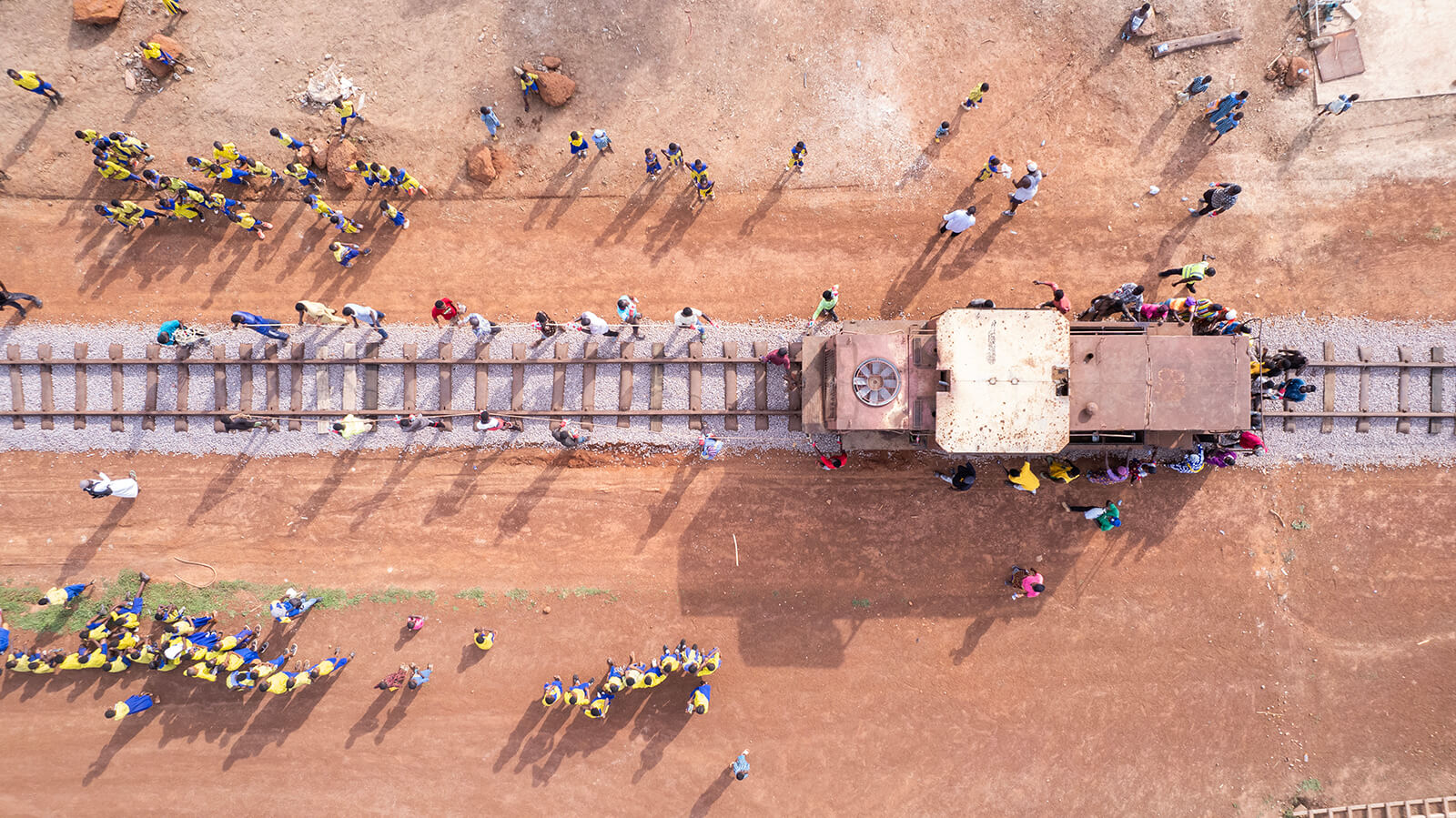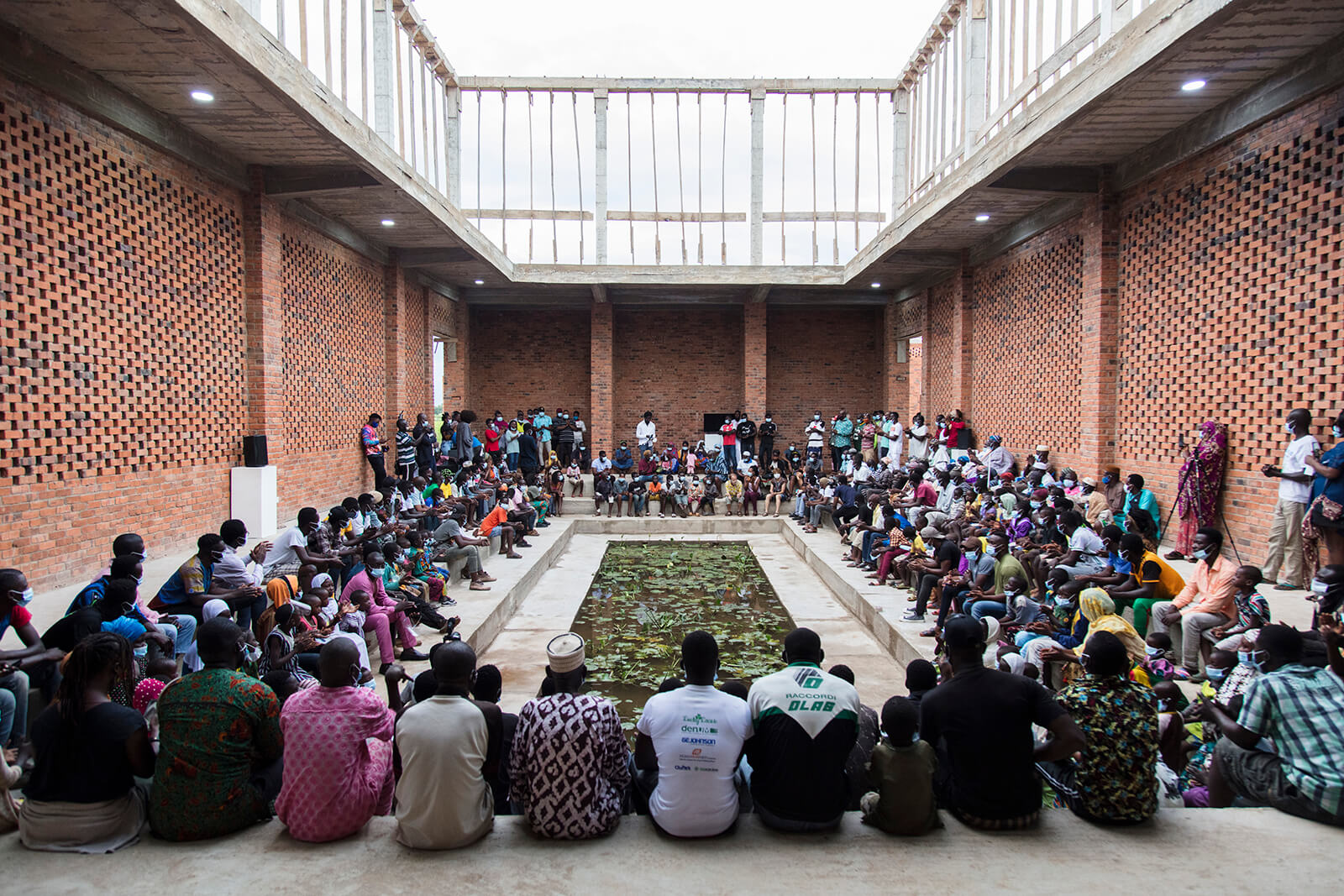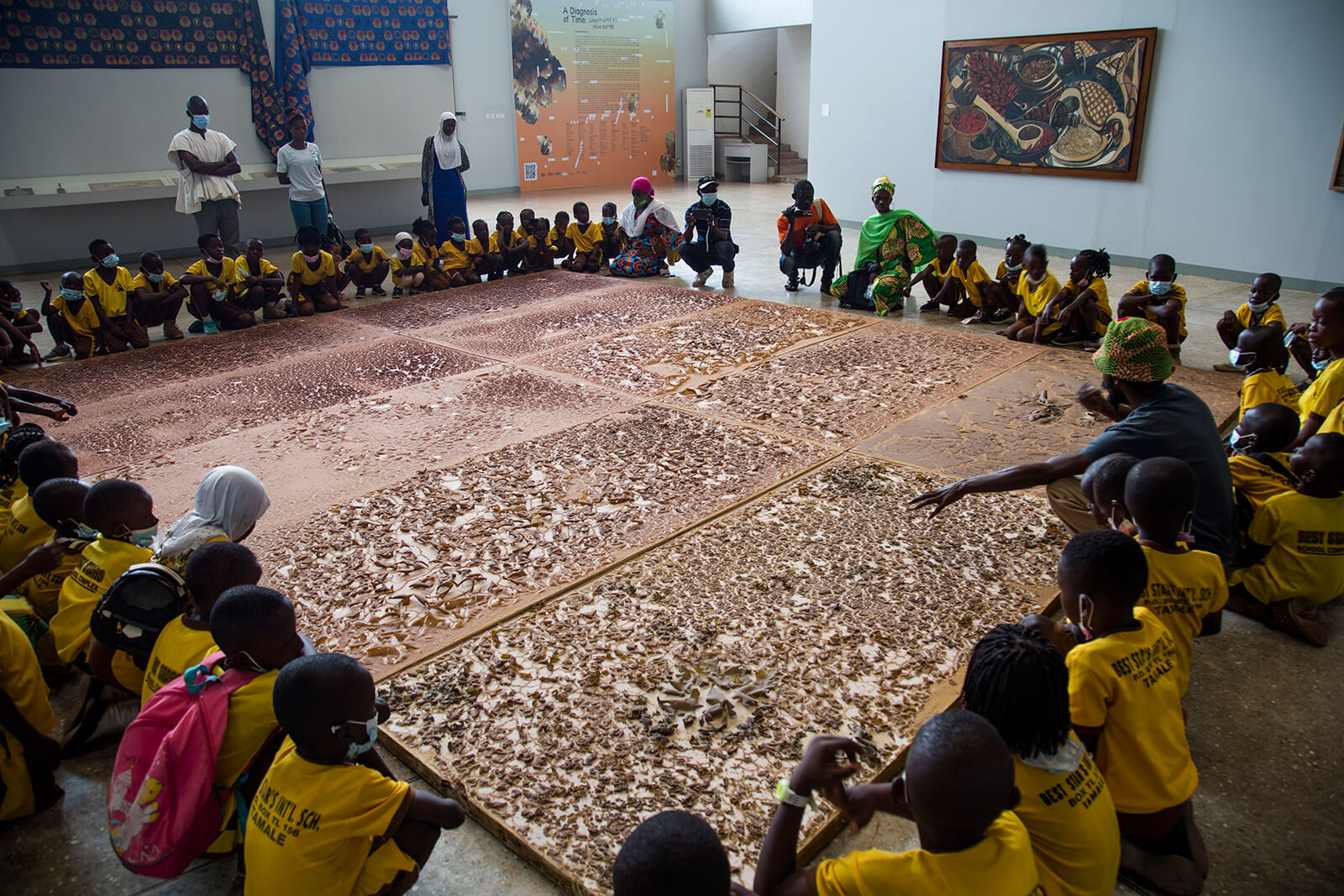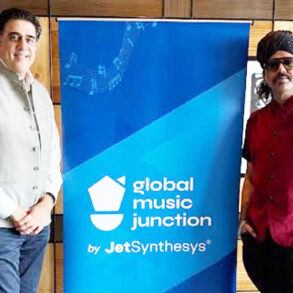Ibrahim Mahama stands out in the contemporary art scene as a skilled storyteller and an innovative artist, disrupting conventional narratives through his impactful installations. Born in Tamale, Ghana, in 1987, Mahama earned his Bachelor of Fine Arts in Painting in 2010, and a Master of Fine Arts in Painting and Sculpture in 2013 from Kwame Nkrumah University of Science and Technology. Mahama’s distinctive artistic approach blends purposeful interpretation with spontaneous actions. His creative journey typically begins with a deep connection to a specific object or material, emphasising the absence of predetermined concepts. Instead, he initiates his artistic process by keenly observing and expanding upon elements that capture his interest. Engaging in urban explorations, he collects diverse objects, preserves and consistently revisits them over extended periods. Inspired by historical figures who embraced experimentation and unwavering commitment in their endeavours, Mahama strives to make a significant contribution to humanity.
Mahama’s artistic prowess is evident in his large-scale installations crafted from jute sacks, symbolising global exchange and the disparity between goods and people. Through collaborations, he transforms these sacks into massive patchwork quilts, draping them over renowned structures worldwide. Notable installations include encasing public structures in Athens for documenta 14 in 2017 and transforming an outdoor corridor in the Arsenale complex at the 56th Venice Biennale in 2015.
In addition to his creative endeavours, Mahama founded the Savannah Centre for Contemporary Art (SCCA) in 2019, fostering research and artist residencies in Tamale. In 2020, he opened Red Clay, a studio complex followed by an educational institution, Nkrumah Volini, in 2021. With a profound commitment to storytelling, economic exchange and challenging colonial legacies, Mahama’s art invites viewers to explore the complexities of crisis, failure and global transactions through unconventional materials and architecture.
In a conversation with STIR, the artist elaborates on his artistic practice, storytelling, collaborative approach and more.
Ayça Okay: An African proverb says, “Until the lion tells the story, the hunter will always be the hero.” This proverb resonates with your work, emphasising the importance of sharing untold truths and challenging narratives for various reasons. I appreciate how you weave concepts and materials to explore commodities, migration, globalisation and economic exchange themes. You are both an influential storyteller and an improviser envisioning the possibilities of materials and architecture. Can you share your story with us? Was being an artist always part of your plans and dreams? What has predominantly shaped your practice?
Ibrahim Mahama: I was born in northern Ghana, a region with significant historical contributions to the country’s development. However, this history is often marginalised when told. As artists, we believe that art should expand the realms of freedom and justice. Interestingly, Ghana’s motto is “freedom and justice,” many who fought for this freedom from the British colonial administration were from my region but often marginalised. This deeply interested me. I studied art at the Kwame Nkrumah University of Science and Technology in the Department of Painting and Sculpture. I have constantly challenged the notion that art should be exclusive to the elite, as modern institutions often portray. I wanted to view art as a fundamental human right, akin to justice, healthcare and water. To achieve this, I needed to radicalise my practice. I explored ways to use residues from the art world to intervene in building institutional structures that could prompt society to reconsider its relationship with art and its associated elements.
Ayça: Can you define your approach to your creative process?
Ibrahim: My approach to creating art combines careful reading of meanings and spontaneous actions. I often start with a strong sense or character of something, whether it’s an object or material. The process begins without a fixed idea; it starts with observing and building upon what I see. I collect objects during my walks through the city, sometimes keeping them for years, constantly revisiting them.
I draw inspiration from historical figures like comedians, scientists and mathematicians who based their work on experimentation and a sense of belief, hoping their efforts would contribute something meaningful to humanity. This extends beyond humanity to life in general, encompassing planetary, intergalactic and multidimensional realities. The goal is to produce work that influences the fundamental questions of life.
Ayça: Being the first African country to gain independence after British colonisation, Ghana’s journey to independence in 1957, which established a liberal economic model and spurred development, seems to have influenced your ideas. Your interest in material, process and audience has led you to explore abandoned places. Can you elaborate on how you connect with these abandoned spaces?
Ibrahim: These buildings are like visible ghosts scattered throughout the country and the entire region in the post-independence era. One of the significant political agendas during that time was the quest to industrialise the continent. The belief was that economic freedom and emancipation were essential for true independence. A nation with financial autonomy could shape its future without external conditions. However, relying on constant financial aid came with strings attached, as seen with the World Bank and International Monetary Fund interventions, often requiring currency depreciation or port privatisation. Many countries now grapple with debts from China, the European Union and others. Kwame Nkrumah, the former president of Ghana between 1957-66 foresaw this post-independence era, anticipating the rise of neoliberalism and new capitalism.
Ayça: Which, unfortunately, never seems to end.
Ibrahim: Exactly. However, we need to create an environment that challenges these systems consciously. They are deeply entrenched, and while they may be mechanisms, dismantling them requires substantial effort. Nkrumah was asking these questions, leading him to invest in specific infrastructures. Despite contradictions, he collaborated with Americans, Eastern Europeans, and the Soviet Union to build public infrastructure in Ghana. However, when he was overthrown in the mid-1960s, there was propaganda from America’s Central Intelligence Agency suggesting that Nkrumah was building nuclear bunkers due to the concrete structures that seemed fit for nuclear shelters. These buildings were functional rather than aesthetically driven, but appreciating them required understanding their purpose.
Like brutalist buildings or Zaha Hadid’s concrete creations, these structures were magical in various ways. Abandoned, they took on an additional layer of enchantment. I found them more magical because they had been left to nature. Abandoned estates with plants crawling over them and bats living underneath—these buildings presented pockets of potential future uses that their initial architects could not have envisioned. When I acquired one of these buildings, I intended to let the building teach me about alternative ways of interacting with it. Built in 1966, half of the living species within it were believed to have become extinct.
Living in a space like that, especially during the COVID period, when bats were being blamed for diseases, made me reflect on humanity’s impact. We have colonised planets, exterminated each other, committed acts of genocide and relied on fossil fuels, leading to carbon emissions. Bats seek refuge in buildings because of environmental changes. Reflecting on these historical forms in crisis, I questioned what it means for us to rediscover truths within them while learning to cohabitate.

Ayça: This leads me to my next question. Let’s delve into your storytelling. How does it contribute to creating your large-scale installations, particularly regarding the jute sacks representing the past, present and future? In one of your interviews, you mentioned that finding different points of aesthetics within the surface of the sacks is a crucial aspect of your work titled Non-Orientable Nkansa. I assume this statement also applies to the Parliament of Ghosts. By exploring these materials, how do you connect crisis, failure and global transactions?
Ibrahim: While I may be a storyteller in terms of narrating these stories and orders, I am equally interested in the voids embedded within failures. Consider a material like the jute sack, used to transport cocoa, coffee and more from the Global South to Europe, generating billions of dollars annually. However, the Global South receives only a fraction of that money. Non-governmental organisations then use the excess to teach preventive measures, often focusing on issues like family planning in Africa. In Europe, there’s a growing sentiment of individual enjoyment, while in Africa, family is paramount. The family becomes a means of redistributing resources, working together on a farm to earn money, sending some children to school, and sustaining the family. This structure has historical roots, with my grandfather and father growing up this way. Capital flows significantly shape global structures and impact people worldwide. Yet, the surplus capital returns with a directive to teach us how to live, criticising practices like children working on farms. However, there’s a contradiction, as Europe itself, not too long ago, had children working in coal mines and we can still find such related forms in the West even now. Capitalism is riddled with contradictions and, for me, art serves as a means to reconsider the true nature of capitalism and explore its contradictions to open up new possibilities. I achieve this through the institutions I build, questioning what possibilities they hold for younger people through workshops, paintings, installations and the constructions themselves. These institutions aim to reshape perspectives and open up different possibilities for existing in the world.

Ayça: I am intrigued by the collaborative approach in your practice. Could you share more about how you engage with people to collaborate on your work? The process likely varies based on their skills and expertise.
Ibrahim: Yes, it depends. For instance, I am currently working on installations involving historical pots for storing water around the city. I collaborate with my studio assistants, visiting villages and commissioning locals to produce new pots for us. We exchange barrels for their work. The collaboration unfolds organically through the work, and the process becomes a form of learning. We engage with small dressmakers in the city to create large textile pieces. This collaborative approach is about expanding on artisanal work. We seek people already involved in practices that might not be considered expensive but hold potential for development. It’s a way of pushing the craft further by working with those already doing it.

Ayça: Can you give an example of that?
Ibrahim: One significant example is working with bricklayers to build institutions. Normally, they don’t construct things like this, so it becomes an experiment. Combining materials in different ways can yield unique aesthetics. For instance, we are making large fuel tanks, visible structures instead of the usual buried ones, serving as spaces for guttering. The local community questions these choices, asking why we are creating large fuel tanks instead of conventional structures. It becomes an opportunity for dialogue, sharing and endless explanations.
Ayça: Do you have any plans to establish new art spaces soon? Can you explain the conceptual tendency of the architecture, the functioning of these new spaces and the connection with your collaborative approach?
Ibrahim: One of my plans is to build an art school where each room is both a pedagogical and artistic space. I approach architecture from an artistic perspective, combining different materials and developing forms based on the artistic process. I value what my collaborators can teach me, and their knowledge influences my work and informs future forms.
Ayça: So it’s like you are taking something from them and giving back to them. It’s a two-way street.
Ibrahim: Exactly. The collaboration is reciprocal, contributing to both parties involved.

Ayça: You have established three venues over the years, fully funded by you, and have realised their programmes through your efforts. In what context are these three spaces—SCCA, Red Clay and Nkrumah Volini—working? What type of activities are you currently realising?
Ibrahim: These three venues operate without specific schedules. They host exhibitions, retrospectives, and education programmes and support local production. The venues are flexible, adapting to various activities and initiatives.
Ayça: What are you planning for 2024?
Ibrahim: The challenging part of my work is the investment in building infrastructure, which is expensive. We are finishing three spaces and plan to open them for international collaborations, residences, and workshops. By 2024 and the beginning of 2025, we aim to activate these spaces, hosting people for extended periods to share intellectual knowledge with the community. The ultimate goal is to contribute to the development of the art school, creating a community that fosters sharing and exploration beyond the production of objects.

Ayça: Will you adopt digital models in your education system for the art school?
Ibrahim: The digital is essential, and we must know how to harness and utilise it. However, physical spaces are crucial because people’s realities are shaped by material evidence. While digital is essential, I also want to create physical experiences. We start with physical experiences and then integrate digital elements. We already teach children coding, computing, robotics and other technological forms here. It’s about balancing and ensuring physical and digital experiences are part of the education system.

Ayça: Congratulations on the ArtReview’s Power 100 listing in 2023 which placed you sixth on the list. It’s truly remarkable. How was the experience with the 35th edition of the São Paulo Biennial titled Choreographies Of The Impossible (September 6 – December 10, 2023)?
Ibrahim: Thank you. My first time participating in a biennial was at the Venice Biennale in 2015, and I found it fantastic, especially considering it took place before COVID-19. For the 35th edition of the São Paulo Biennial, I was invited by one of the curators Manuel Borja-Villel. I was fascinated by the architecture of the biennial building as it was my first time, though I have visited Brazil many times for work. The experiment we conducted and the collaborative efforts in producing the work were remarkable. The curators were open and interested in giving individual artists their own space within the exhibition, creating a unique language for each artist while maintaining a cohesive overall presentation. This year has been hectic with participation in shows like the Sharjah Biennial, the São Paulo Biennial, a project at Kunsthalle Osnabrück in Germany, and the Ljubljana Biennale of Graphic Arts in Slovenia, but I can only be grateful and hope to offer more in the future.

Ayça: You were busy for sure. Do you have rituals? How do you treat yourself as a person? Is your personality inseparable from your artistic practice?
Ibrahim: I approach art with careful observation and spontaneity. There is no fixed ritual but rather an intuitive response to the character of materials and objects. My artistic practice is inseparable from who I am as a person. The process involves constant observation, revisiting objects, and drawing inspiration from various sources. Travelling around the world for shows is enlightening, but it also makes me realise the need for more work within the local context. The hectic pace of this year highlighted the importance of balancing global participation with local responsibilities.
This post was originally published on this site be sure to check out more of their content








